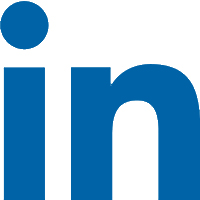The last few months of 2022 were busy ones for Caroline Ikumu, our program manager in Kenya (pictured above at far right). She spent much of that time on the road, travelling to visit our projects in Elgeyo Marakwet County.
But she isn’t complaining. The cause of all this busyness was one to celebrate. Between October and the end of December of last year, 20 villages in the county were declared Avoidable Blindness-Free.
Far from being a mere formality, these declarations are the culmination of years of collaboration between the community, the local government and the partner hospital.
“In simple terms,” Caroline explains, “Avoidable Blindness-Free means that nobody in the village is suffering from blindness or visual impairment due to treatable and avoidable conditions, and the community is aware of where to get the services for new cases.”
Our approach
We call our approach the “Hospital-Based Community Eye Health Model.” It’s a mouthful, but essentially it means we facilitate door-to-door screening to communities in remote and underserved villages and make referrals to our partner hospitals where people can access treatment.
In Kenya, we work with community health volunteers who are trained in primary health care and provide health education and services at the village level throughout the county. We deliver additional training in eye health, and then the volunteers go door to door in our project area to screen community members for eye conditions.
As they screen, the volunteers make referrals to the partner hospital, the eye unit at the Iten County Referral Hospital, where people can get treatment, such as cataract surgery or a pair of eyeglasses, free of charge. A volunteer might return to the same household several times to make sure every member of the family has been screened.
The community health volunteers also encourage people identified with eye problems to attend outreach camps that are centrally located within the villages to make sure everyone has access to further screenings. From there, transport may be arranged for those needing treatment at the partner hospital.
Working with community leaders and health care workers, we make sure that the community is in support of the project and can take ownership of it.
Health education
Another part of the community health volunteer’s role is providing education about health issues, often attending social meetings such as micro-savings groups called “chamas” to make sure they’re reaching people when it’s convenient for them.

Due to misconceptions about surgeries, not everyone jumps at the chance to get treatment, so the volunteers identify community members who have had success with their treatment to act as ambassadors. “So they tell them, ‘I was not able to see. I could not work. Now I’m back at my farm. I’m evidence that you can be treated and start your life again,’” explains Caroline.
Our programmers also conduct PACEH meetings – PACEH being an acronym for Participatory Approach to Community Eye Health. These meetings help our team understand the perception of the community on eye diseases, eye health providers and treatment received. They also identify misconceptions and address gaps in knowledge on eye health, and they ask community members if they know of anyone who might still be experiencing vision loss or blindness. Finally, they ensure community members know where and when to seek treatment so that they can take responsibility for their own eye health going forward.
Resurvey, validation & declaration
Community health volunteers conduct door-to-door surveys again towards the end of project duration to ensure that there are no backlog cases. During these screenings, ophthalmic workers screen at least 10 per cent of the population to see if the volunteers are accurate in their assessments and whether they need any refresher training.
After a village has gone through the resurvey process and we have determined that all those requiring treatment have received it and that the level of eye health awareness is high, the next step is a declaration event. The partner hospital works with community health volunteers and local government officials to arrange a time and date for a village celebration, and they often erect a billboard to mark the achievement.

During the declaration, beneficiaries speak about how their restored sight has changed their lives. Caroline recalls one older woman who had never seen her two grandchildren due to cataracts. After surgery, the grandmother laid eyes on the children for the first time and cried with joy.
“Everyone is happy because they can see their hard work paying off,” says Caroline of the declaration events. “They are proud of themselves because it’s a milestone that we have achieved together.”
Sustainability
Caroline explains that the idea behind eye health education is to change behaviour, so that the community members take charge, prioritize their own eye health and seek treatment when necessary, without anyone having to remind them. By constructing and equipping the eye units and training ophthalmic workers, we ensure the community will continue to have access to treatment for years to come.
Operation Eyesight Universal is committed to working toward the United Nations’ Sustainable Development Goals, which are a universal call to action to create a more fair, just and equitable world ensuring no one is left behind. Sign up for our eNews to learn more about how we are working to end poverty, promote good health and well-being, increase gender equality, provide access to clean water and promote partnerships to achieve the goals.


